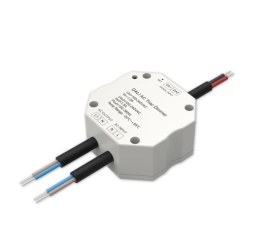
Transformers and ECG
In this section you will find numerous suitable transformers and electronic ballasts for our professional lighting systems and module systems.











































Transformers and electronic ballasts (EBs) are important components in the electrical industry. They are used in a wide range of electrical devices and systems. But where are they most commonly used?
Transformers are most commonly used in power supply and power transmission. They are used to regulate the voltage of power sources and transmit electricity efficiently. Transformers are also used in many electrical devices such as lamps, electric motors, air conditioners, and computers.
Transformers for lighting are used in various lighting systems, especially halogen lamps and fluorescent lamps. They are used to regulate the voltage and provide the current for the lamps. However, in modern LED lighting technology, they have largely been replaced by electronic ballasts.
ECGs are mainly used in lighting systems, especially for indoor lighting and street lighting. They provide an efficient and constant power supply for light-emitting diodes (LEDs) and gas discharge lamps (HID). ECGs are also used in building automation and industrial applications where precise control of current is required.
ECGs for lighting are mainly found in LED lighting. They provide an efficient and constant power supply to LEDs and enable precise control of brightness and color temperature. ECGs for lighting are also used in street lighting, offices, public buildings and industrial applications.
With transformers and ECGs, it is important to ensure proper power, voltage and frequency. Incorrect installation or application can lead to short circuits or fires. Therefore, transformers and ECGs should be installed and maintained by qualified personnel. They should also be checked regularly for proper operation and safety.
There are various forms of transformers and ECGs for lighting, depending on the application and design. Transformers, for example, can be electronic transformers for low-voltage halogen lamps or conventional ballast transformers for fluorescent lamps. ECGs for lighting can be designed as conventional ECGs, dimmable ECGs, emergency LED drivers or intelligent lighting control systems.
When installing and using transformers and ECGs for lighting, it is important to pay attention to the correct specifications such as voltage, current and frequency. Compatibility should also be ensured between the transformer or ECG and the lamp being used. Improper installation or use may result in malfunction or safety problems.
 Deutsch
Deutsch
 English
English
 Nederlands
Nederlands
 Français
Français
 Contacts
Contacts
 +49(0)2822-9148740
+49(0)2822-9148740











 Andorra
Andorra
 Belgien
Belgien
 Bosnien und Herzegowina
Bosnien und Herzegowina
 Bulgarien
Bulgarien
 Dänemark
Dänemark
 Estland
Estland
 Finnland
Finnland
 Frankreich
Frankreich
 Griechenland
Griechenland
 Irland
Irland
 Island
Island
 Italien
Italien
 Kroatien
Kroatien
 Lettland
Lettland
 Liechtenstein
Liechtenstein
 Litauen
Litauen
 Luxemburg
Luxemburg
 Malta
Malta
 Monaco
Monaco
 Niederlande
Niederlande
 Norwegen
Norwegen
 Österreich
Österreich
 Polen
Polen
 Portugal
Portugal
 Rumänien
Rumänien
 San Marino
San Marino
 Schweden
Schweden
 Schweiz
Schweiz
 Serbien
Serbien
 Slowakei
Slowakei
 Slowenien
Slowenien
 Spanien
Spanien
 Tschechische Republik
Tschechische Republik
 Ungarn
Ungarn
 Vereinigtes Königreich
Vereinigtes Königreich
 Zypern
Zypern















.jpg)






